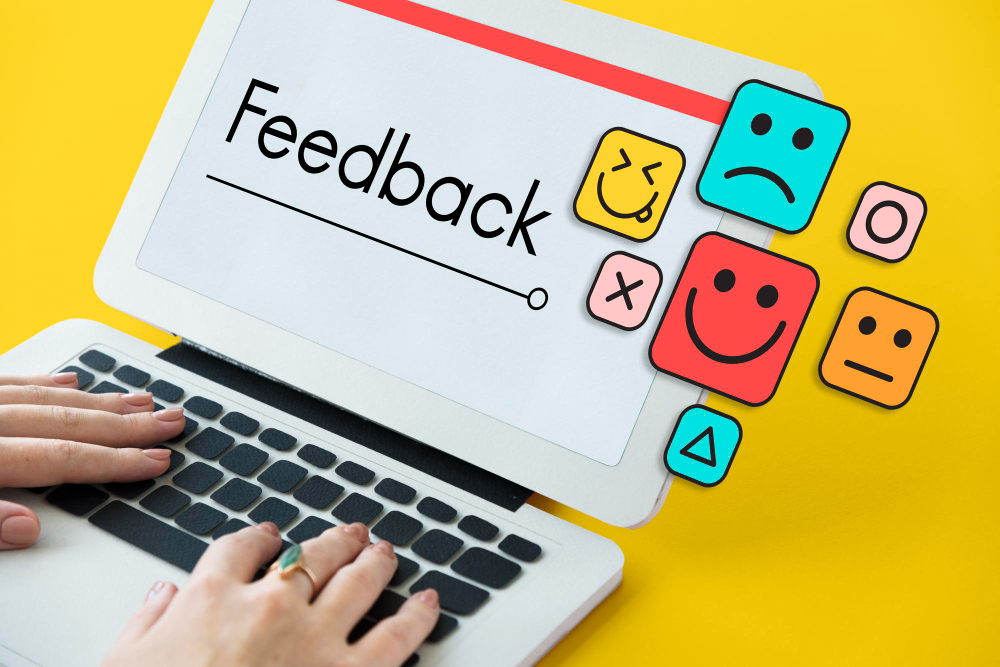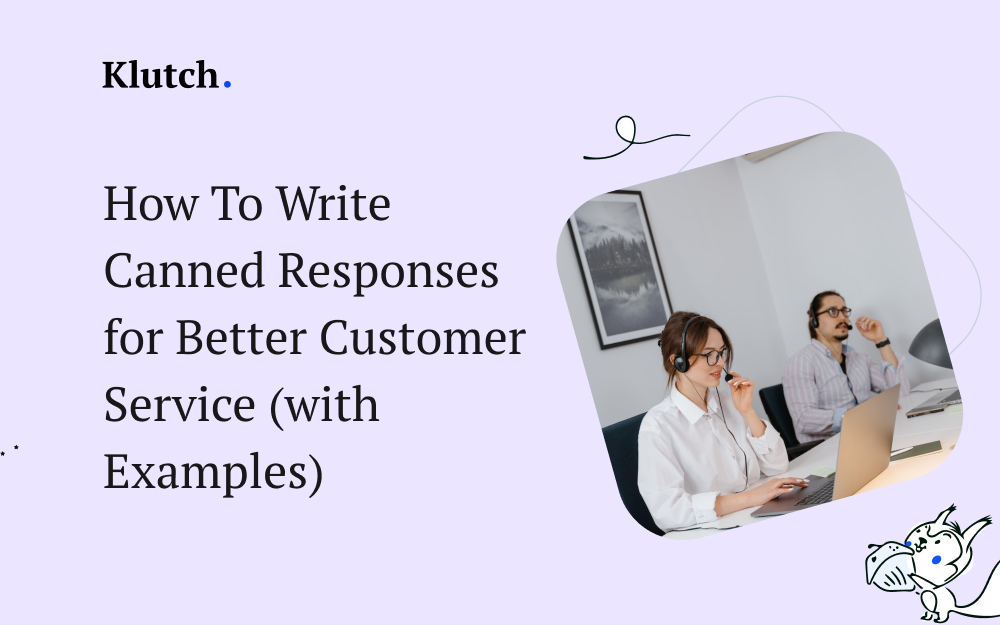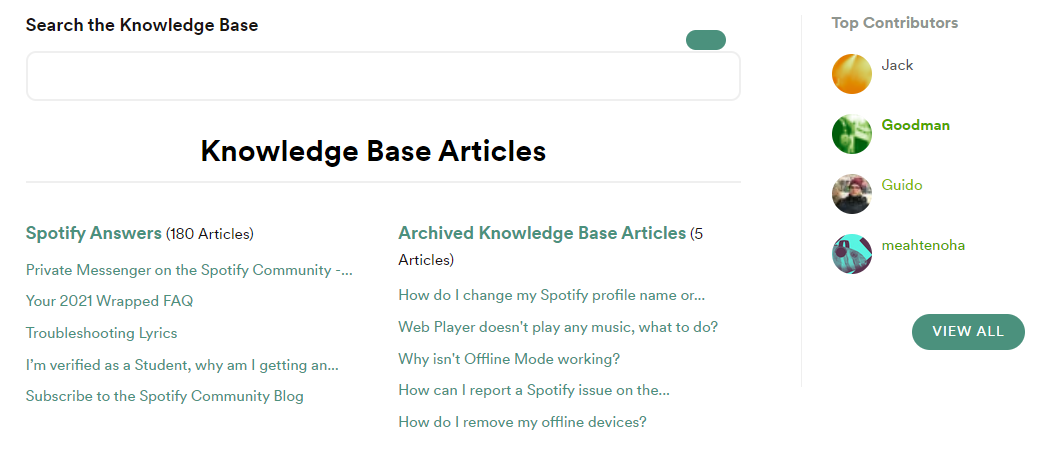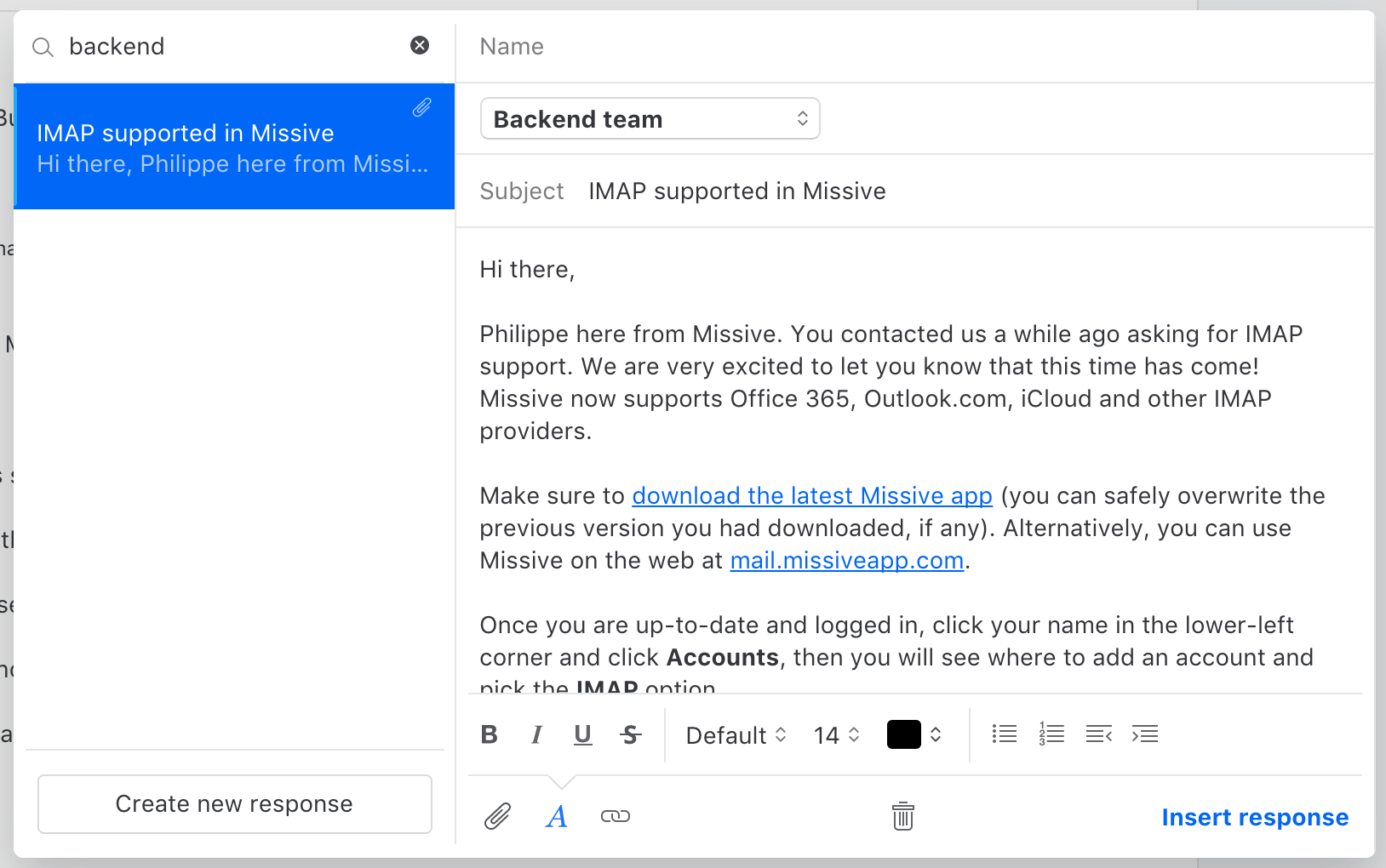A good knowledge base is essential to boost several aspects of your business. However, one of the main points your knowledge base must manage is customer support.
Many business owners avoid working on improving their customer support entirely, causing many unsatisfied customers in the long run. Fortunately, the internet has given us many tools we can use to optimize our knowledge base and therefore, our customer service.
One of these tools you can start using today is canned responses. Whether you use knowledge management software or work with traditional methods, canned responses are a great way to save time and money while providing your customers with the information they need through emails, chats, and other communication channels.
However, implementing canned responses in your knowledge base isn’t as easy as it seems. If you want to know how these responses work, keep reading!
What Are Canned Responses?

In a nutshell, a canned response is a pre-determined response you write for common questions your potential customers ask. You may see these response types in FAQ sections and general customer support chats.
Your goal here is to update your knowledge base with some of the most common answers your clients are going to need from you. In some companies, business owners tend to receive a lot of repetitive questions. Answering the same question over and over isn’t convenient at all, and that’s where canned responses come in.
Using Canned Responses
Canned responses can be used in different business areas. In e-commerce areas, for example, you may receive many questions regarding refunds, shipping costs, and work schedules. Using canned responses allows you to provide that information to the public without having someone answer the same question every day.
On the other hand, businesses like enterprises may receive frequent questions regarding subscriptions, prices, and others. You can use canned responses there as well.
Overall, canned responses allow you to answer commonly asked questions in a matter of seconds, which both you and your clients are going to appreciate. However, keep in mind that you cannot simply place any answer in your knowledge management tools. Having improper answers may lead to clients feeling frustrated.
According to Microsoft, about 96% of clients say that customer service is one of the most important factors when deciding which brand they’re going to be loyal to. Keep reading if you want to know how you can make the most out of your canned responses!
Tips and Tricks for Improving Your Canned Responses
Writing a good canned response can make all the difference to your customer. If your potential customer feels like they’re talking to a robot that isn’t helping at all, they may choose to walk away from your company.
Thankfully, there are many tips you can start following today if you want to improve your canned responses, whether they’re for emails, live chat, and others.
Be Straightforward
All clients want straight-to-the-point answers. Regardless of your business area, clients don’t want to read too much text about something that can be said in a couple of sentences.
In essence, you must do your best to avoid fluffing your responses to sound ‘more professional.’ Clients only care about getting the answer they’re looking for. If they ever need more details about the thing they’re asking about, they’re certainly going to ask further.
Using long canned responses for everything can be overwhelming, so make sure you evaluate your knowledge base and try to come up with concise answers to the questions your clients may ask.
Avoid Highfalutin Words
Highfalutin words are those that try to make your message seem superior or smart. While many people believe using highfalutin words can make your business feel more authoritarian, it can make the wrong impression on your customers.
In a nutshell, highfalutin words are complex words, such as ‘hackslaver,’ ‘hesitude,’ ‘honestation,’ ‘horally,’ and others. As you may already guess by now, these words are unnecessarily complex, and they only harm your message’s content. Moreover, they can make you sound arrogant, which drives customers away from your brand.
Keep in mind you don’t have to use ‘smart’ words to truly sound smart. As long as you answer your clients’ questions correctly, you’re not going to have any more problems.
Utilize Links to Relevant Articles and Documents
There’s nothing better than backing up your messages with relevant information. You may not typically need to use links in canned responses, but there may be particular cases where linking to a relevant article may make your message stronger.
If you have a business with blog posts and other information people may appreciate, you can use that to your advantage. Using text like “You can go into this page if you want to read more about (issue).”
Make It Sound Human
This is the part where many businesses fail. Years ago, people didn’t care too much about how they perceived a business. However, thanks to the digital era, people are looking to ‘connect’ more with the things they consume.
One of the best ways to make your brand succeed through canned responses is to make them as human as possible. As mentioned before, if your clients feel they’re talking to a robot, they’re likely not going to have a pleasant experience. So if you’re running a B2B marketplace platform or any other platform that requires communication with clients it’s crucial to humanize the interaction as much as possible.
Have Empathy
Something that many business owners forget is that clients don’t know as much about the business as they do, so clients are likely to make questions that seem too simple for them.
Your canned responses must be as emphatic as possible. Try to get into your client’s shoes: How would you like the business to address your problem? Once you have the response to that question, you may update your canned responses to fit your new criteria.
Don’t Hesitate to Use Long Canned Responses If Necessary
While we’ve mentioned that using long canned responses all the time isn’t too convenient, it doesn’t mean you can’t ever use them. Some particular questions require detailed answers, and if you can’t make them shorter, you’re free to use longer responses.
Still, make sure every sentence of your canned response is relevant to the topic and is helpful for the client. It doesn’t matter how long the response is as long as it doesn’t have any fluff on it.
Be Reassuring
This goes in hand with being emphatic. Clients want to feel like you’re truly solving their problems. Something many business owners do is write a generic message saying ‘they’re going to get back to them shortly,’ without any reassurance that they’re going to solve anything.
Be Consistent with Your Tone
You must make sure all your canned responses share the same tone. Remember clients are mostly looking for a ‘friendly’ service, but if you use different tones with every message, your clients are going to feel they’re talking to a lot of different people, which is confusing.
Canned Response Examples
There are many canned responses you can start using today, but here’s a list of the most common ones you may need for your knowledge base right away:
Greetings
“Hello! I’m (Name). How may I help you today?”
“Good morning/afternoon/night, (Customer’s Name)! How can I help you?”
Greetings are simple, but it may be best to prepare different versions of the same greeting to fit different customer profiles.
Updating Problem Situations
“Hello, (Customer’s Name)! We’re currently working on your order (Order Number), and unfortunately, it hasn’t been updated yet. We’ll let you know as soon as we get an update.”
“Thank you for your message (Customer’s Name)! I just checked your order number, and our (Team) is already working on it. You’re going to receive an update within (Time Frame).”
As mentioned before, clients want to feel like you’re truly solving their problems. It’s as simple as letting them know you’re fixing their problem and that you received their message.
Details
“Hello, (Customer’s Name)! Of course, I can assist you with (Issue). I’m going to need your (Information You Need) so that we can get started.”
In some cases, you may need to ask for further details about a client’s request. Make sure to be as specific as possible.
Clarifying Details
“Let me clarify this information. You want to (Request) through your order number (Order Number), which is currently (Order Status)?”
“So, would you like me to help you with (Request) so that you can (Solution)? Am I correct?”
Try to avoid confusion and clarify details whenever you need it.
Admitting Fault
“Sorry for the trouble, (Customer’s Name). We will (Action) as soon as possible to fix this issue.”
Admitting a mistake is something few businesses do, so make sure you take care of those details. Remember we all make mistakes sometimes.
Making Transfers
“I’m going to transfer you with my colleague from the (Department) who is more familiar with your issue.”
In case you need to transfer the particular issue to another department, make sure you also have a message for that.
Closing Tickets
“Hi, (Customer Name)! I’m happy to inform you that your (Order Number) case has been resolved successfully. Therefore, I’m closing your ticket. Feel free to reach out again if you ever need help again. Thank you for your patience!”
You need to close your support tickets as soon as the problem has been fixed. A short message in these cases is enough.
Handling Complaints
“I’m really sorry to hear about your issue. I understand how it could cause such a big problem for you. Let me see what I can do to help you!”
Remember to show sympathy by acknowledging your customer’s feelings instead of brushing them off.
Confused Customers
“Hi, (Customer Name)! I’m afraid you reached out to the wrong company. We don’t sell (Item) or are associated with any of (Company)’s products.”
Some customers may contact you by accident or ask for things you don’t offer. In these cases, make sure to be as respectful as possible.
Receiving and Requesting Feedback

Receiving Feedback: “Thank you for your feedback, (Customer’s Name)! We’re eager to review your recommendations and improve for next time.”
Requesting Feedback: “Hello, (Customer’s Name)! I’m happy I could help you with your issue. If possible, could you take a moment to answer one simple question by clicking one of the links below? – Good, I’m satisfied – or – Bad, I’m unsatisfied – Here’s a short brief about your initial request (Brief). Thank you! (Your Name)”
Whether it’s good or bad, getting feedback is essential if you want to grow your business. Make sure to show appreciation any time your customers give you a bit of feedback.
What You Should Avoid When Writing Canned Responses
Automating the Whole Conversation
While using canned responses is excellent to optimize conversations. Trying to automate the entire conversation doesn’t work. Keep in mind that not all clients are going to ask for the same thing or have the same issues.
If you keep the same, generic answer for everyone, most of your clients are going to feel confused. Try to keep a concise answer for general topics, and if the client asks for further details, make sure to get someone to take over the rest of the conversation.
Sounding Too Technical and Robotic
As mentioned before, the client doesn’t know as much about your business as you do, so try to avoid using overly-complex terms in your messages.
The simpler your message, the better. Moreover, remember to ‘humanize’ your messages as much as possible so that they’re more emphatic toward the customer’s problem.
Making the Process Hard for Customers
It should go without saying, but you must make the process as easy as possible for your customers. If you need to ask for more details, for example, make sure to do it in a friendly way rather than confuse the customer with unnecessary information.
In the end, your customers are going to appreciate experiencing a process that didn’t take them ages to complete.
Wrapping Up
Having a good, dedicated knowledge base is vital if you want to optimize your canned responses and improve your customer service in the best way possible. Some software, such as Klutch, is perfect to try out for these purposes.
If you ever need something efficient to start, make sure to try Klutch today!






